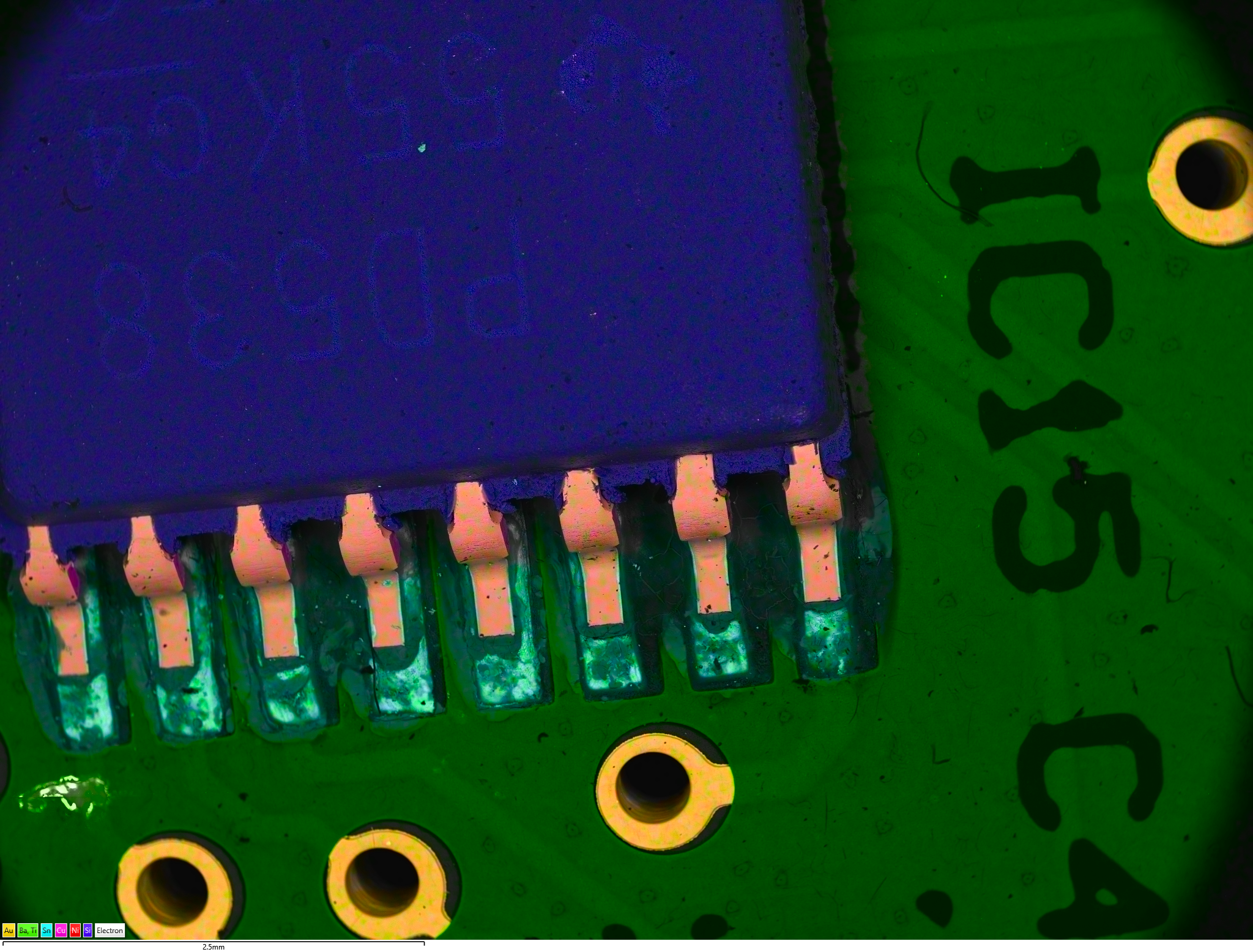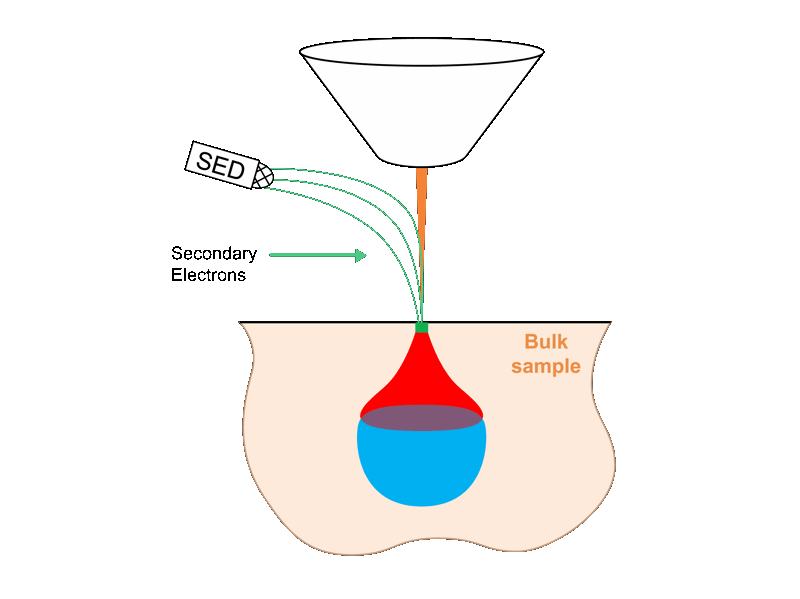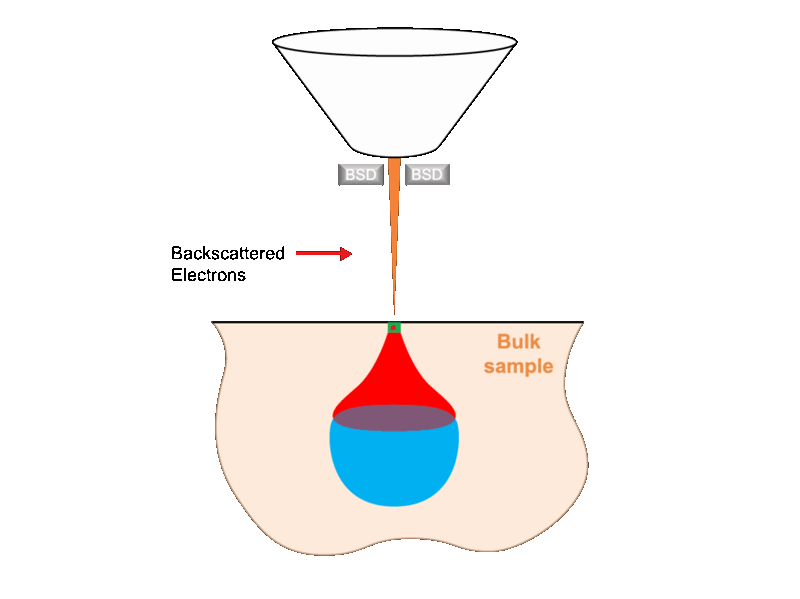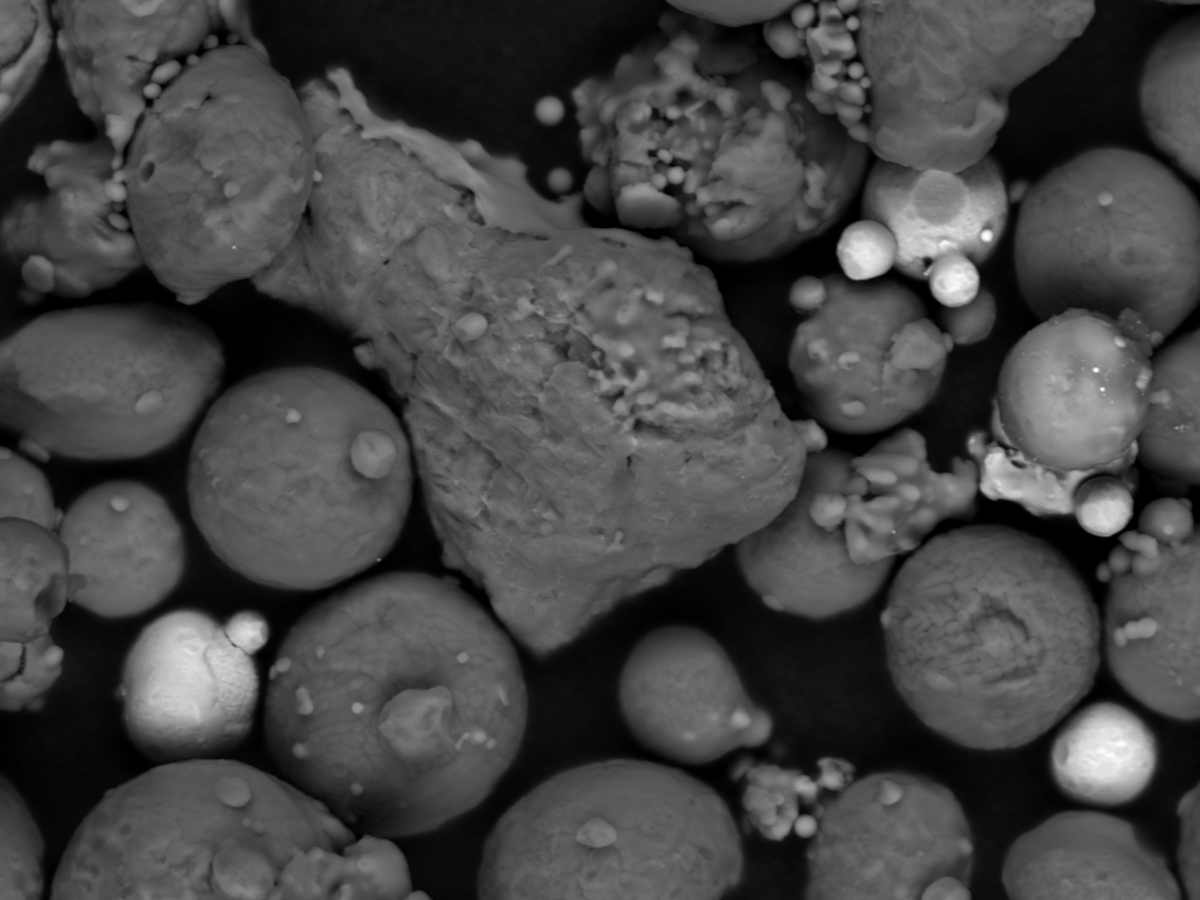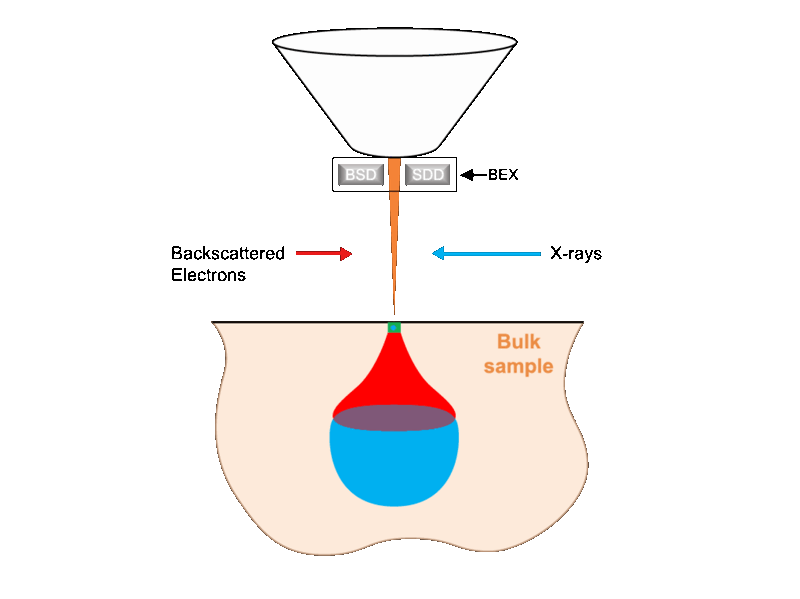Imaging with BEX
BEX combines BSE sensors with X-ray sensors which are placed in the same geometry as a standard BSE detector, immediately below the objective lens. The X-ray sensors, typically silicon drift detectors (SDDs), measure characteristic X-ray emissions generated as the sample is irradiated by the SEM electron beam in the same manner as an EDS detector. Software algorithms process the collected X-ray signal to automatically identify which elements are present. These elements are then assigned colours which are layered along with the signal from the BSE detector to provide a final image.
When compared to SE or BSE imaging a BEX imaging system provides more information about sample composition and elemental distribution in the same acquisition time, with the same operating conditions.
In contrast to an EDS detector, a BEX imaging system has sensors with an incredibly high solid angle. This ensures X-ray information can be collected at normal imaging speeds and with typical imaging beam currents (~1 nA). The position of the SDD, near the objective lens, also eliminates shadowing effects from sample topography and allows for sample investigation at a wider range of working distances.
BEX coloured electron image
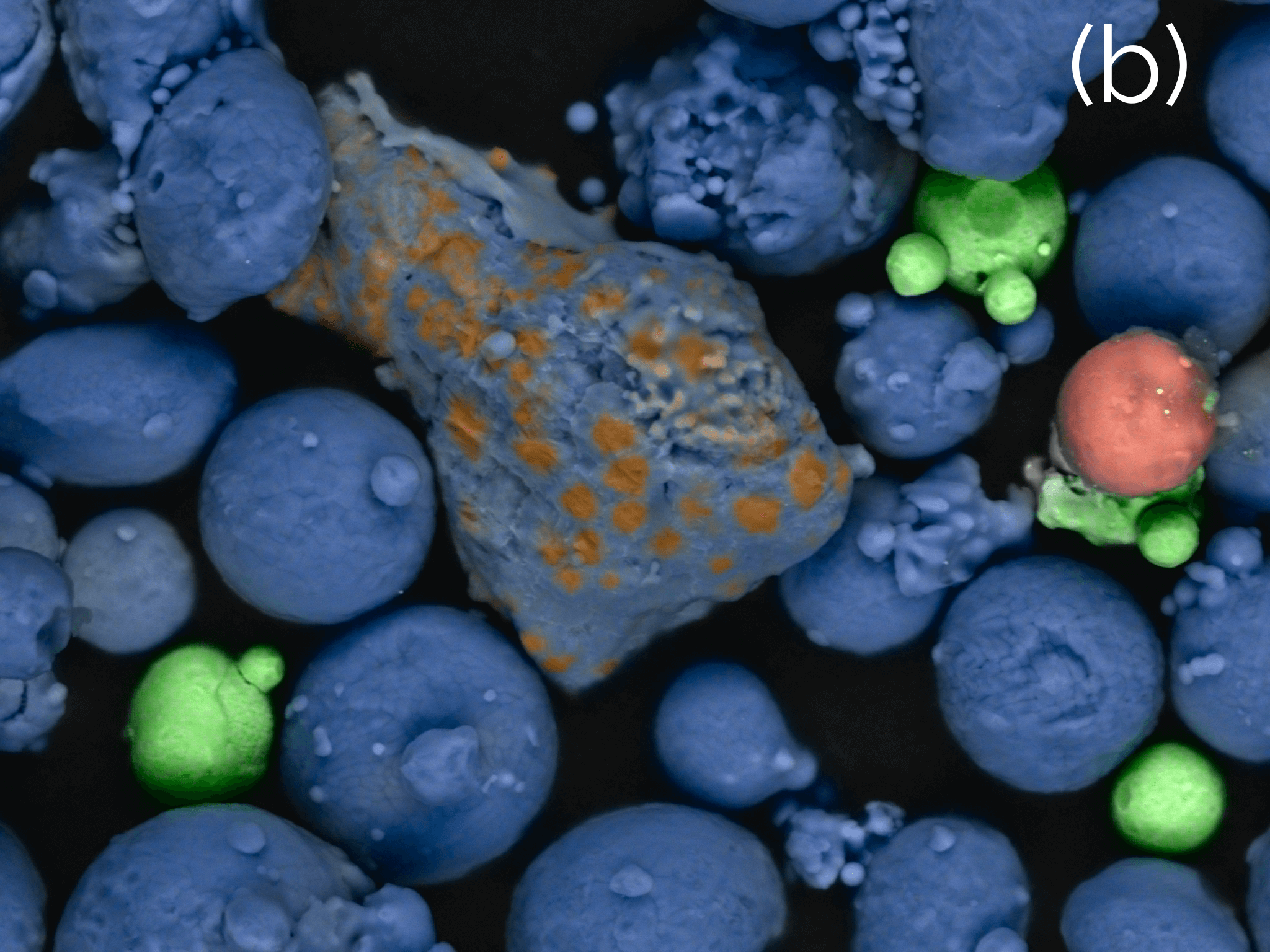
Backscattered electron image
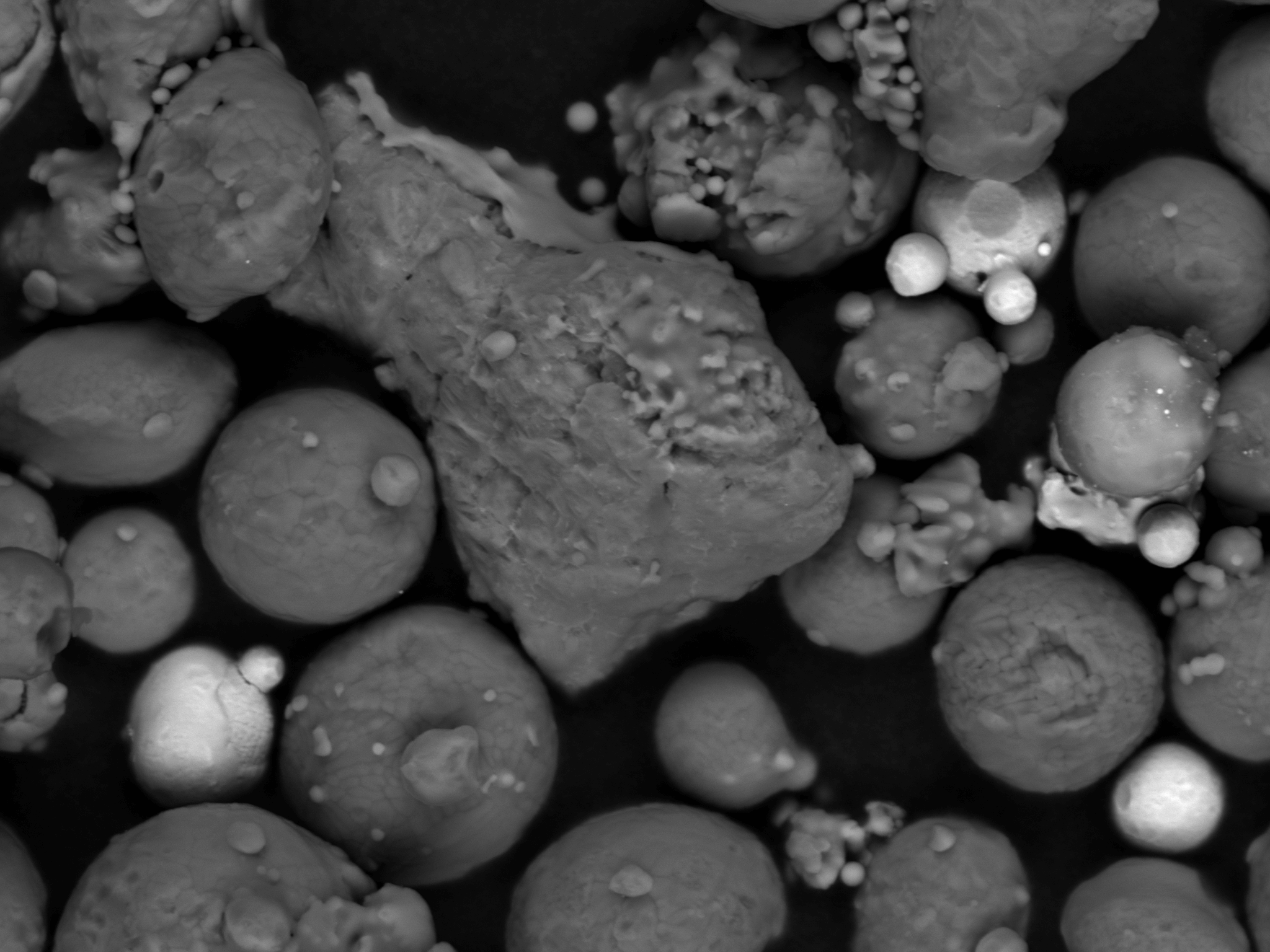
Backscattered Electrons (red in a.) and X-rays (blue in a.) are detected and combined to produce a BEX colour image showing sample composition b). 20 kV, 1 nA, 15 seconds to acquired.



